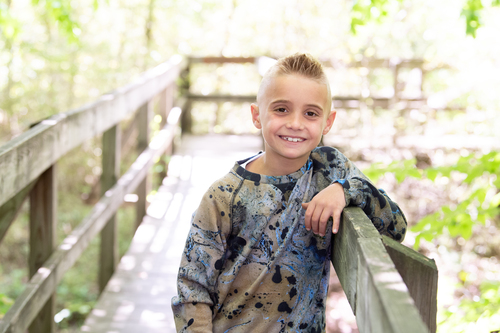
At age 8, Dylan Modelski was diagnosed with an oligodendroglioma, a low-grade or slow growing brain tumor.
Nine-year-old Dylan Modelski only knows one speed – fast – and he applies it to all 5 sports he plays. But, this spring, the Poland McKinley third grader was diagnosed with a brain tumor that he couldn’t out run on his own.
“The school nurse called to tell me she was concerned about Dylan’s reaction at speech therapy …he gave a blank stare, twitched a little and then got sick,” said Jenna Modelski, Dylan’s mom. “We took him to the Akron Children’s ER in Boardman to get checked out … two hours later we were heading to the Akron campus for more scans and to meet with a team of specialists.”
Scans revealed a 3.4 cm tumor deep within the right side of Dylan’s brain, and he would need surgery to remove it.
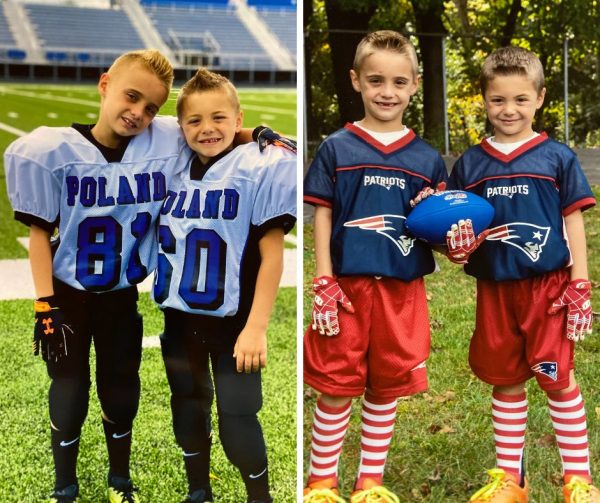
Dylan loves sports and is known for his speed. Pictured above with his little brother, Cooper, his best friend and teammate.
“Our whole world stopped. We were in complete shock,” said Jenna. “The doctors were wonderful because they would kindly explain and re-explain things in a very informative and calming way because we were struggling to understand how, why, what…it’s a lot to take in.”
Dylan had always been healthy, but doctors believed some subtle signs he had recently experienced – the blank stare, carsickness and a fall at school – were likely due to seizures caused by the tumor irritating the right side of the brain.
“Signs and symptoms of a brain tumor depend on several factors including a child’s age at presentation, type of tumor, its size and location within the brain, and how fast the tumor grows,” said Ian Rossman, MD, PhD, pediatric neurologist at Akron Children’s. “Initial diagnostic testing and treatment is based on how a child’s symptoms present. It is only after surgery, when the type of tumor is confirmed, that we can provide a more complete prognosis and devise a treatment plan.”
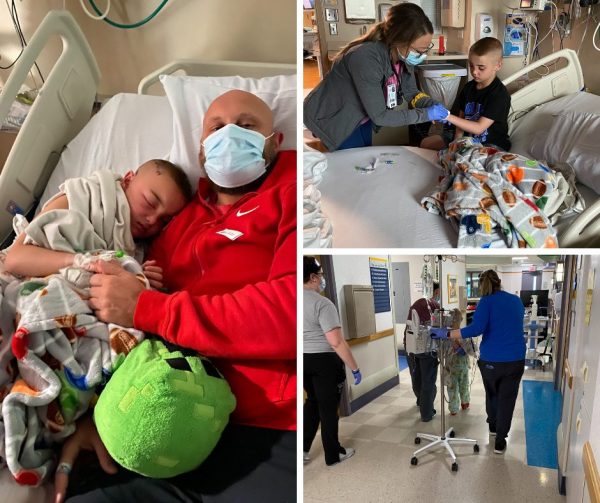
Within hours of Dylan’s surgery, he was up walking around and went home a few days later. Pictured above with his dad and Akron Children’s staff.
After surgery, and in true Dylan style, he was quick to recover and went home just 3 days later. The pathology results, a series of microscopic, chemical and genetic tests needed to identify the tumor type, weren’t quite as fast.
About a week later, doctors diagnosed Dylan with an oligodendroglioma, a low-grade or slow growing brain tumor. While more common in adults, the vast majority of children with oligodendrogliomas develop them spontaneously, with no identifiable cause.
“The location of Dylan’s tumor made complete removal very risky. Dr. Joel Katz did a fantastic job removing as much of the tumor as possible, without damaging the deeper structures of the brain, which could have left Dylan with deficits in movement, speech, hearing and eyesight,” said Dr. Rossman. “When tumor is left behind, we rely on a multidisciplinary team of specialists to monitor patients for changes in function, as well as the size and location of the tumor. As with all children, our goal is to keep Dylan healthy, active and safe while he returns to school and many of the sports he loves.”
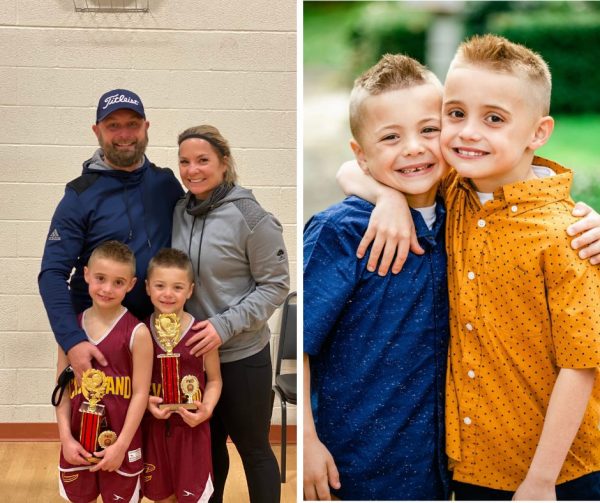
Dylan’s biggest support system has been his family. Pictured above with his mom, dad and Cooper.
For Dylan, the plan is to wait and monitor the tumor every three months for changes.
“Other than the tumor going away altogether, it’s the best news we could have possibly received,” said Jenna. “We know, chances are, the tumor will grow but we’re thankful for where we’re at now…and for now, we just go with the flow.”
Throughout Dylan’s journey, the Poland community has rallied around him – complete with a hero’s homecoming, special visits from high school sports teams and inspirational messages from family, friends and classmates.
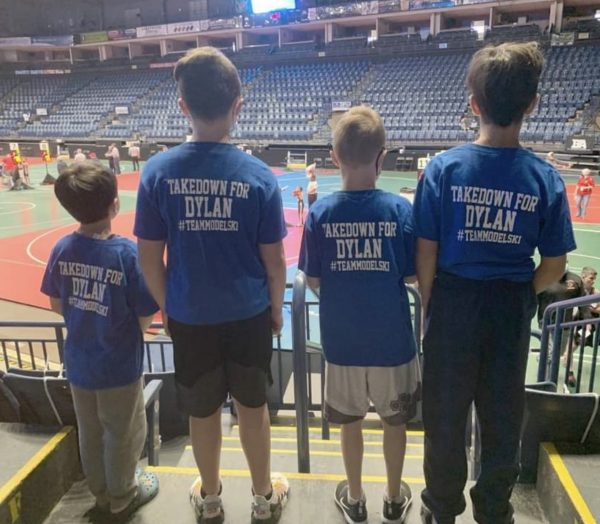
The Poland community has also shown their support for Dylan with shirts, signs, notes and even lined the streets with banners and balloons to welcome him home after surgery.
“I really don’t think Dylan understood what he had been through until he saw the outpouring of love from our community,” said Jenna. “Dylan is always full of questions, but his biggest one now is, ‘when can I go back to playing sports.’”
Although Dylan hasn’t been released to play his favorite activities – football and wrestling – he doesn’t let the tumor stop him from attending every practice, where he continues to learn plays and support his teammates from the sidelines.








